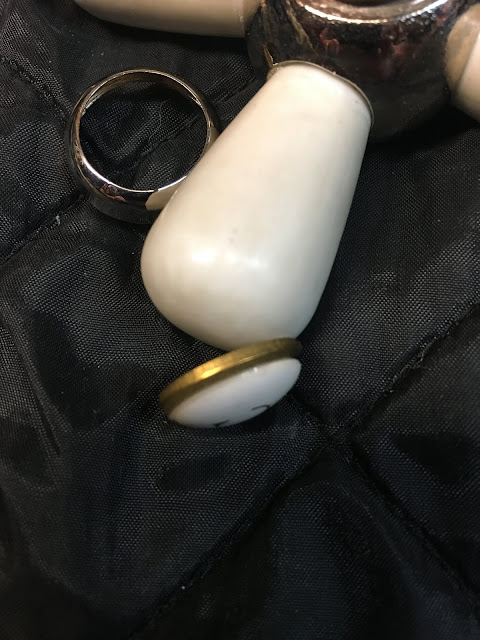There are more than a few styles of drain strainer wrench. There are also several styles of drain strainer. As with most things to do with plumbing, drain strainers have become fairly uniform. In the times before drain strainers became uniform there were some interesting and sometimes beautifully ornate variations. Therein lies the problem.
Most of the faucets that are sent to me for restoration must first be removed from large heavy fixtures. They have been set on those fixtures for many decades and it is usually no easy task to separate them. One of the most difficult parts to remove is the drain strainer. This is complicated further when the strainer is cast in an ornate pattern that will lend itself to no known style of strainer wrench. Unfortunately, because of this problem, I sometimes receive bent or twisted ornate drain strainers along with the brassware I am to restore.
I do my very best to remedy this and sometimes have interesting results. That is a different blog post though and I will be getting to it soon.
The work I do these days is far down the road of my journeyman experience. At this point I see myself as an artisan and my work is important to me in terms that don't relate to profit. In a way it is simple problem solving and in a way it is using my tools and my skills to manipulate various materials with the goal of preserving and at times recreating what once was.
While I have the time and interest to do this work, most plumbers do not. Nor should they unless they care to, under their own momentum. One thing I do not want to do is make their task more challenging than it needs to be. I expressly want them to have success when it comes time to reinstall the fixtures I am sending back. I am always willing to consult on the reinstallation, though most plumbers don't ask for the help. I probably wouldn't either. I try to provide specifications and measurements when I think it will help. I also try to provide tools at times, especially for unusual drain strainer patterns.
For the most part the drain strainer wrenches I fashion would not successfully remove strainers frozen in place by decades. They should be strong enough to be used as installation tools though. I have made quite a few custom drain wrenches and I am getting better at taking the time to get photos along the way.
This ornate lavatory drain was made by J.L. Mott. I have seen the pattern several times on drains of basins as well as tubs. This strainer plate has suffered a bit and is no longer truly symmetrical. It is in fair condition though. When I make a tool for a strainer I try to create as many points of contact as I can. I also try to make those points of contact as far out on the radius as I can. That way the stress is shared by more than the usual two points and the points of contact have more potential torque. In this case I have created six points of contact. I am sending two of these fixtures back and I wanted to make a tool; that would work for both.
 |
Notice the blue tape. the strainer is not symmetrical so the tool fits best when the tape on the tool and strainer align.
|
I selected six 1/4" x 20 steel straight slot screws. I then cut into the straight slots until the slots extended under the heads. That way I could cut the heads off and the screws would essentially be long straight slot set screws. I cut the heads off so that I could mount the screws into my lathe. Then I blunted the sharpness of the screw threads on the lathe to protect the brass from the threads.
With the screws in place I mixed enough epoxy to embed the screws inside of the cap, creating a much stronger tool. At that point I covered the steel screws with shrink wrap intended for wiring, further protecting the brass from the steel.
 |
Of the three lavatory drain assemblies I received for this project one was different.
Making this tool was much simpler and I did it in my usual way. I was more conscious of getting photos of the process with this tool.
Once I have selected what I will use as the face of my tool I center it on the strainer and mark where it will protrude through. In this case the best fit was found using a 3/4" CPVC coupling.
I often use a hand saw to make my cuts. This time I used a cutoff wheel and my moto tool.
 |
| The unmarked and isolated sections represent the spokes of the drain pattern. |
The narrow sections are removed with a needle nose plier.
What remains are six lugs that fit into the pattern of the strainer.
 |
| This power tool is an old Montgomery Ward Power Craft. |
 |
| This tool will go with the fixture for the convenience of the installer. |



























